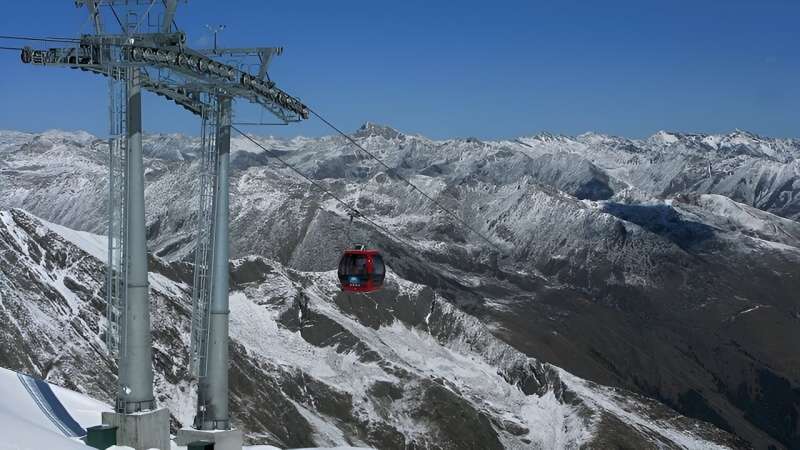This article has been reviewed according to Science X's editorial process and policies. Editors have highlighted the following attributes while ensuring the content's credibility:
fact-checked
proofread
Chinese scientists are combating a glacier's melting by covering it with a blanket

One of China's most-visited glaciers in the Tibetan region, the Dagu Glacier, is now covered with white sheets, also known as geotextiles, in an attempt to slow its melting. Scientists at Nanjing University are leading the effort, and in July installed a white reflective material over 400 square meters of the glacier, located in Sichuan province in southwestern China.
The project begins as the Dagu, one of the largest glacier tourism sites in China, as well as other glaciers around China face severe melting due to rising temperatures. In the past 50 years, glaciers on the Tibetan Plateau, where the Dagu is located, have shrunk by about 15%, according to research from the Institute of Tibetan Plateau Research of the Chinese Academy of Sciences.
The effort is funded by video game giant Tencent Holdings' Carbon Neutrality Lab, as part of the company's stated goal to be a leader in encouraging society to develop sustainably. The company says it is committed to achieving carbon neutrality by 2030, and seeks to foster sustainable innovation beyond its own goals, according to its website.
Although glacier blankets are a novel method of glacier preservation in Tibet, they have been employed in the past, primarily at European ski resorts. At the Rhone Glacier in Switzerland, glacier blankets have been installed seasonally for the last 13 years in an attempt to preserve ski slopes and tourism.
In an article published by Tencent, Zhu Bin, a material scientist at Nanjing University leading the effort, said that local communities have welcomed the attempt to preserve the glacier.
"We have received overwhelming support from the local communities over the past years," Bin said. "The protection of the glacier is more important than ever as it underpins the entire ecosystem as well as the livelihood of the locals."
The use of blankets in other regions has come with controversy, as many people have criticized them for their lack of long-term feasibility. Blankets are often hard to scale up, and cannot protect glaciers from the effects of warming for long periods of time.
"They're a little bit of a desperation measure," said Mauri Pelto, a professor of environmental science at Nichols College who studies glaciers. "If you've only covered just a tiny part of the glacier, the [rest] is melting. That doesn't sustain your operation."
There are also obstacles depending on the region, including the fact that higher elevation glaciers are harder to reach. Combined with the high expenses of the project, many say that geotextiles offer too little, too late.
A study published last year in the journal Remote Sensing by researchers from the Chinese Academy of Sciences showed that a blanket installed over part of the Dagu Glacier was effective at slowing melting, with the covered area showing 15% less mass loss than uncovered areas.
However, as the study noted, high expenses, harsh geography and aging of textiles limit the feasibility of using blankets in widespread areas. Geotextiles must be manually installed, and many glaciers are in areas that are difficult to reach. Although the textiles used in this project are designed to be eco-friendly, according to researchers, they are still made from materials that create carbon emissions.
Although glacier blankets cannot stop melting, some have said that, especially in areas with high tourism, like the Dagu Glacier, they can be effective visual reminders of the impact of climate change. "I think actually ultimately, this is more of a visual reminder to tourists and recreationists that climate change is making an impact in those areas," said Mark Carey, a historian at the University of Oregon who studies glacier retreat and climate change. "It's an educational tool."
Researchers on the project team are aware that glacier blankets can only do so much. "All the human intervention methods that we're working on, even if they prove effective, are only going to slow down [the melting]," Bin said. "If the earth keeps getting warmer, in the end, there is no way to protect the glaciers forever."
Provided by State of the Planet
This story is republished courtesy of Earth Institute, Columbia University http://blogs.ei.columbia.edu.




















